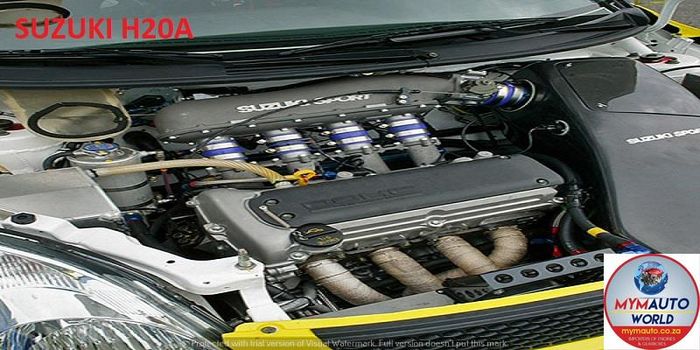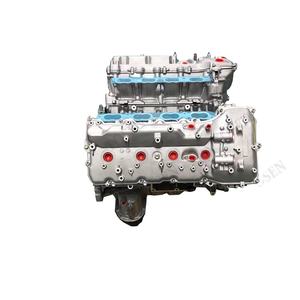Exploring the Inner Workings of a Compact Vehicle's Engine System
As motorists, we usually consider approved the complex processes that happen within the confines of our car's engine system. The small yet complex machinery that propels us forward is a wonder of engineering precision and sychronisation. From the controlled explosions in the burning chamber to the thorough timing of gas shot, every element plays a critical duty in the smooth operation of the engine. In this exploration of a portable automobile's engine system, we will decipher the internal functions of this mechanical symphony, clarifying the enigmas that drive us onward on our daily journeys.
Combustion Refine Summary
The burning process in a portable car's engine system is a critical device that efficiently transforms gas into power to power the vehicle. This process takes place within the combustion chamber of the engine, where gas and air mix, stir up, and create regulated surges. The combustion process contains four major stages: consumption, exhaust, power, and compression.
Throughout the intake phase, the piston relocates downward, pulling in a mixture of air and fuel right into the burning chamber. The following stage, compression, entails the piston moving upwards, compressing the air-fuel combination to boost its potency. Ultimately, in the power stage, the ignition system sparks the compressed blend, resulting in a fast development of gases that requires the piston pull back. This downward activity generates the power needed to drive the lorry. In the exhaust stage, the burnt gases are expelled from the combustion chamber with the exhaust shutoff, preparing the chamber for the next cycle. This cyclic combustion procedure is basic to the operation of a small lorry's engine system, guaranteeing reliable power conversion for propulsion.
Piston and Cyndrical Tube Communication

The piston's precise fit within the cylinder is essential for keeping optimum compression and stopping energy loss during burning. Tight clearances between the piston and cyndrical tube wall surfaces make sure effective sealing, permitting the piston to relocate smoothly without allowing gases to leakage past. Appropriate lubrication is also essential to minimize friction and put on in between these components, boosting durability and performance.
In addition, the style and materials used in manufacturing the piston and cyndrical tube impact engine performance and longevity. Modern engines commonly employ light-weight yet durable products like aluminum alloys for pistons and cyndrical tube liners to minimize inertia and enhance thermal effectiveness. Overall, the harmonious communication between the piston and cylinder is basic to the engine's performance and discover this total performance.
Gas Shot System Functionality
Fuel shot systems in portable car engines play an essential function in specifically supplying fuel to the combustion chamber for reliable and regulated ignition. The gas shot system operates by injecting fuel into the combustion chamber at the optimal minute throughout the engine's operation (opel corsa engine). This exact timing ensures that the fuel mixes uniformly with the air for correct burning, leading to improved gas performance and reduced emissions
There are mainly 2 kinds of gas injection systems made use of in portable lorry engines: port gas shot (PFI) and straight gas shot (DFI) PFI systems infuse fuel into the intake port before the intake valve, while DFI systems inject gas directly into the combustion chamber. Both systems have their advantages, with DFI providing much better fuel atomization and PFI offering a more cost-effective solution.
Understanding Engine Cooling Mechanisms
Efficient procedure of a portable lorry's engine depends heavily on the effectiveness of its useful link cooling mechanisms. Engine cooling is vital to prevent overheating, which can bring about severe damages and reduced performance. The air conditioning system in a small car usually includes numerous components functioning with each other to regulate the engine temperature. check my source One critical component is the radiator, which utilizes coolant to absorb heat from the engine. As the hot coolant moves with the radiator, it releases warmth into the air, cooling down prior to going back to the engine. The water pump distributes the coolant through the engine and radiator, making certain a regular flow to manage temperature. Additionally, the thermostat helps regulate the coolant flow to maintain ideal engine temperature. Some automobiles also have cooling down fans that activate when added cooling is required, such as during rush hour or warm weather. Comprehending these engine cooling devices is important for keeping the performance and durability of a portable car's engine system.

Exhaust System Components Explained
The ideal performance of a portable vehicle's engine air conditioning mechanisms depends on a complementary system referred to as the exhaust system, which makes up different necessary parts for ensuring reliable emissions and engine performance. The exhaust system consists of parts such as the exhaust manifold, catalytic converter, muffler, and tailpipe. The exhaust manifold collects exhaust gases from the engine's cyndrical tubes and routes them to the catalytic converter. The catalytic converter after that transforms dangerous toxins in the exhaust right into less damaging discharges before releasing them via the muffler and tailpipe.
One critical part of the exhaust system is the oxygen sensor, which monitors the oxygen degrees in the exhaust gases to assist regulate fuel consumption and ensure optimum engine performance. opel corsa engine. In addition, the resonator might be present in some exhaust systems to lower sound levels. On the whole, the exhaust system plays a crucial role in keeping engine efficiency, lowering dangerous emissions, and guaranteeing a quieter driving experience for small lorry proprietors

Conclusion
Finally, the small automobile's engine system is a complicated combination of parts that work with each other to promote the burning procedure, convert gas right into energy, and eliminate waste gases. Understanding the internal operations of the engine system, including the piston and cylinder communication, gas injection system, engine cooling systems, and exhaust system elements, is essential for preserving optimum performance and effectiveness of the automobile.
The burning procedure in a portable automobile's engine system is an essential mechanism that effectively converts gas right into power to power the lorry.Fuel injection systems in compact car engines play an important duty in precisely delivering fuel to the combustion chamber for controlled and efficient ignition.There are mainly two types of fuel injection systems used in compact lorry engines: port fuel injection (PFI) and straight gas shot (DFI) Recognizing these engine air conditioning devices is essential for keeping the performance and durability of a small car's engine system.
The optimal functioning of a compact vehicle's engine air conditioning devices depends on a complementary system known as the exhaust system, which comprises numerous essential parts for making certain reliable discharges and engine performance.